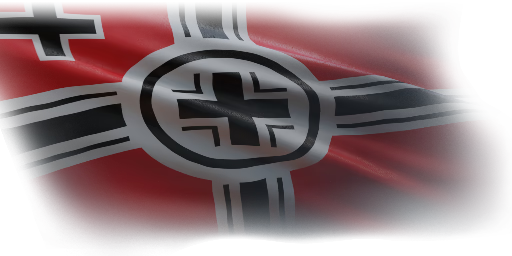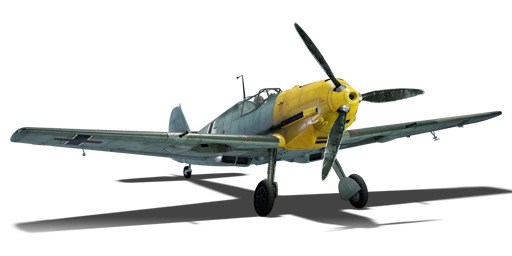



The Bf 109 E-3 is a German fighter. It has been in the game since the start of the Open Beta Test prior to Update 1.27.
After having experienced the Bf 109 E-1, players will rejoice upon unlocking the E-3. While essentially the same plane, the E-3 overcomes the inadequate firepower (compared to other aircraft of similar BR) of the E-1. With two wing-mounted 20 mm MG FF cannons, the plane packs a deadly punch. Players that did well in the E-1 and learned their Bf 109 trade will be able to make great use of their new Emil. Fighting in the E-3 is essentially the same in the E-1 with the difference that a pilot can now actually reliably dispatch enemies in a short burst.
Remaining a great energy fighter against its historical opposition, the E-3 is somewhat troubled by the fact that it often faces mid-to-late-war planes such as the P-47D. To engage these, make sure to have a clear energy advantage: if attacked, fly defensively and attempt to bleed the enemy's speed while pulling them down. The Bf 109 E-3 is often regarded as a poor turner, a reputation coming out of the fact that its main rival, the Spitfire, simply did it better. However, with combat flaps, the E-3 is a respectable turner able to out-manoeuvre most planes that outperform it in firepower or other factors.
The 20 mm MG FF cannons can not fire Minengeschoss shells. These shells have thin cases, allowing more incendiary material to be used. however, these very same characteristics prevent these shells from being fired from older MG FF versions like the E-3 sports. This means that the E-3's cannons compare poorly with the later MG FF/Ms.
flaps
flaps
flaps
brake
| Belt | Belt filling | Armor penetration (mm) at a distance: | |||||
|---|---|---|---|---|---|---|---|
| 10 m | 100 m | 500 m | 1000 m | 1500 m | 2000 m | ||
| IT/IT/APHE | 19 | 18 | 15 | 10 | 4 | 4 | |
| IT/FI-T/FI-T/APHE | 19 | 18 | 15 | 10 | 4 | 4 | |
| FI-T/FI-T/AP-I/APHE/IT | 25 | 24 | 18 | 10 | 1 | 1 | |
| IT/IT/FI-T/FI-T | 10 | 10 | 5 | 2 | 1 | 1 | |
| APHE | 19 | 18 | 15 | 10 | 4 | 4 | |
| Belt | Belt filling | Armor penetration (mm) at a distance: | |||||
|---|---|---|---|---|---|---|---|
| 10 m | 100 m | 500 m | 1000 m | 1500 m | 2000 m | ||
| AP-T/AP-I/AI | 9 | 8 | 6 | 3 | 0 | 0 | |
| AP-T/AP/AI/AP-I | 13 | 12 | 7 | 3 | 2 | 0 | |
| AP-T | 9 | 8 | 6 | 3 | 0 | 0 | |
| AI/AP/AP/AP/AI | 13 | 12 | 7 | 3 | 2 | 0 | |












Flight performance | |
|---|---|
Survivability |
|---|
Weaponry | |
|---|---|